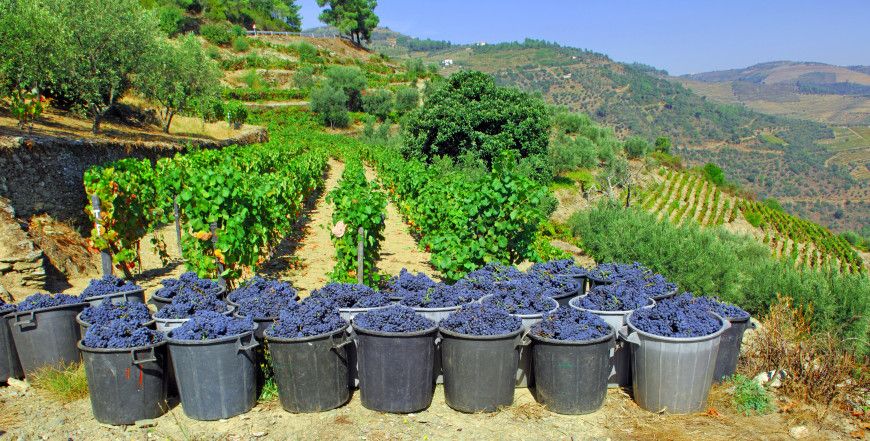Portugal has the weather, the wines and the stories, and is slowly finding a way to tell them in key markets like the US.

The US is now the world’s biggest export market for Portuguese wine, recently overtaking Angola’s top position. This marks some of the contradictory trends for Portuguese wine. Of course the US is now the biggest export market – it’s increasingly so for every wine-producing country simply because there are so many people there to drink wine. Consumption in the US is still quite low at around 10 litres per person (compared to Portugal’s 43l), but those who do drink wine like to drink lots of it and aren’t afraid to pay for it.
That Angola had previously been Portugal’s biggest market points to the country’s dependence on its former colonies and the difficulty of persuading more developed markets of the quality of its wine.
All that’s slowly changing, and right now Portugal presents a wonderful balance between tradition and innovation. The challenge is to educate both consumers and industry insiders. As Mike Turner confessed in The Buyer last week, he had no idea that Vinho Verde, Portugal’s most famous white wine, had so many grape varieties and it’s only by attending intensive tastings that the world of Portuguese wine can begin to be understood.
So much to discover…
I say ‘begin to be understood’ because I’m not sure anyone can claim to fully understand all of Portuguese wine. The range of varieties is huge: 250 of them for a country of around 10m people. There are 2.7 indigenous grape varieties planted per square kilometre, more than anywhere else in the world. If that reads like a meaningless stat, to put it into context Italy is second with one indigenous grape variety per square kilometre. Explaining all these grape varieties is tough, especially when they appear in anonymous field blends, but it also makes Portugal exciting as so few of these varieties are planted elsewhere.

Evan Goldstein MS is helping to drive Portuguese wines in the US
Which brings us back to education. I attended a tasting at a San Francisco art gallery led by MS Evan Goldstein, who valiantly shushed his way through the many grape varieties. The aim was to educate those attending from different sectors of the industry beyond Portuguese stereotypes of Port and field blends and to discuss how to use that education to sell wines to the consumer. The wine may be wonderful, but how do you explain that in a restaurant to someone familiar only with more recognisable international varieties?
Move to single varietal wines
One trend that Goldstein pointed to is the move away from blends to single-varietal wines. It’s long been a complaint about Portuguese wine that it’s difficult to sell when no one knows what’s in the wine. Such a shift to single-varietal wine is welcome, even if it takes away some of the regional characteristics of the wine.

Alvarinho is introducing new white grape varieties to help Portgual’s profile with wine drinkers familiar with varieties like Albarino
Alvarinho leads the way for Portugal’s white grapes, slowly distancing itself from Vinho Verde blends it forms a traditional part of. Although it’s the same grape as Albariño from neighbouring Rías Baixas in Spain, there’s a mineral, creamy texture to the wines that distinguishes it – especially when the wine’s by Soalheiro, the best producer in the region, from vines planted in 1974, coincidentally the year the Salazar dictatorship fell and Portugal entered the modern world.
A food-friendly grape like Alvarinho is familiar to many consumers and a good introduction to Portuguese white wine. Loureiro is equally interesting, but it’s harder to say and less well-known: telling a customer that the name means “laurel-scented” and the wines do actually smell of laurel leaves is a great way of getting them interested.
Understanding black grapes
There are also plenty of black grape varieties. Touriga Nacional is the greatest, producing perfumed, floral, but tannic wines. Baga is perhaps the most astonishing though. We tasted Niepoort’s Poeirinho 2014, made from one-hundred-year-old vines and this highly tannic, floral, leathery wine came in at 11% ABV. I doubt I’ve ever tasted such a complex red wine at such low alcohol.
We also tasted Luís Pato’s Quinta do Moinho, a Baga from 2000. Selling old wine from a little-known variety is hard, but there are several ways: tell the story of Luís Pato who has helped rescue the grape from obscurity; inform the customer it’s very similar to the great wines made from Nebbiolo, with aromas of tar and roses, but at lower alcohol; marvel that an extraordinary 17-year-old wine is so affordable; or amaze the customer by describing how well an old red wine goes with salmon.
Those of us in the trade have palates discerning enough to taste these wines and appreciate their quality, but consumers understandably balk at unfamiliar, difficult to pronounce names. This is where food comes in. If restaurants can persuade customers to drink acidic Alvarinho with seafood or white fish, perfumed Touriga Nacional with rich, herbal meat dishes, or tannic Baga with salmon, then an appreciation for Portugal’s array of varieties and styles can rise.
And, as a Greek producer once said to me, if consumers can pronounce Gewürztraminer they can learn to pronounce the name of any grape variety.









































